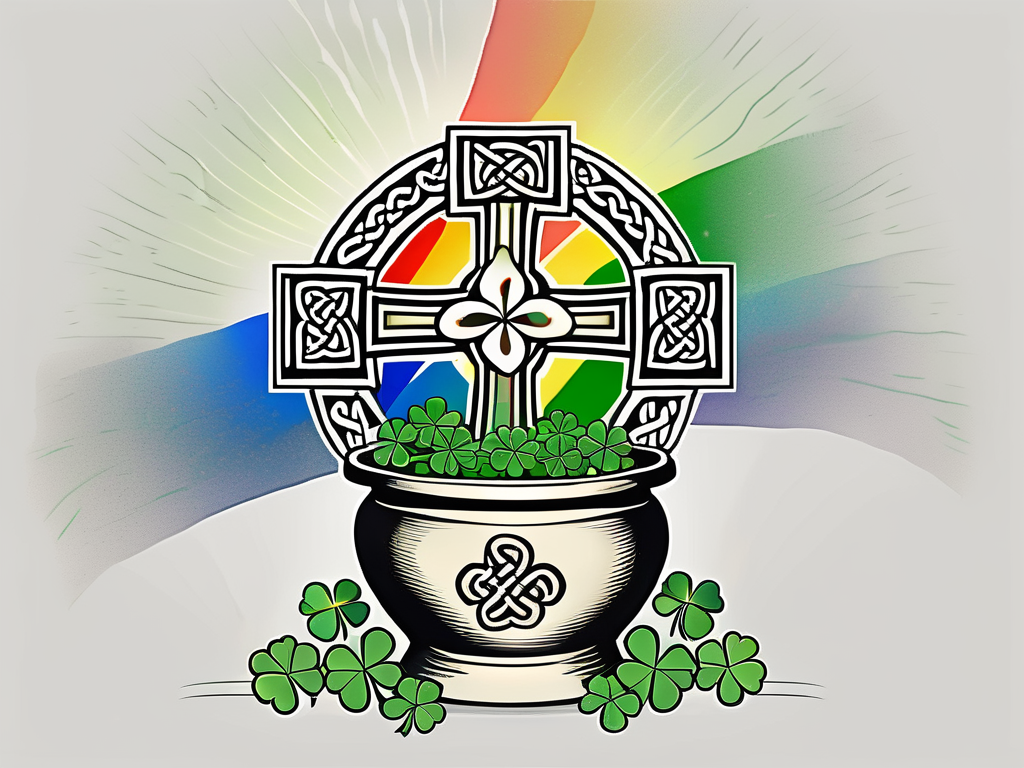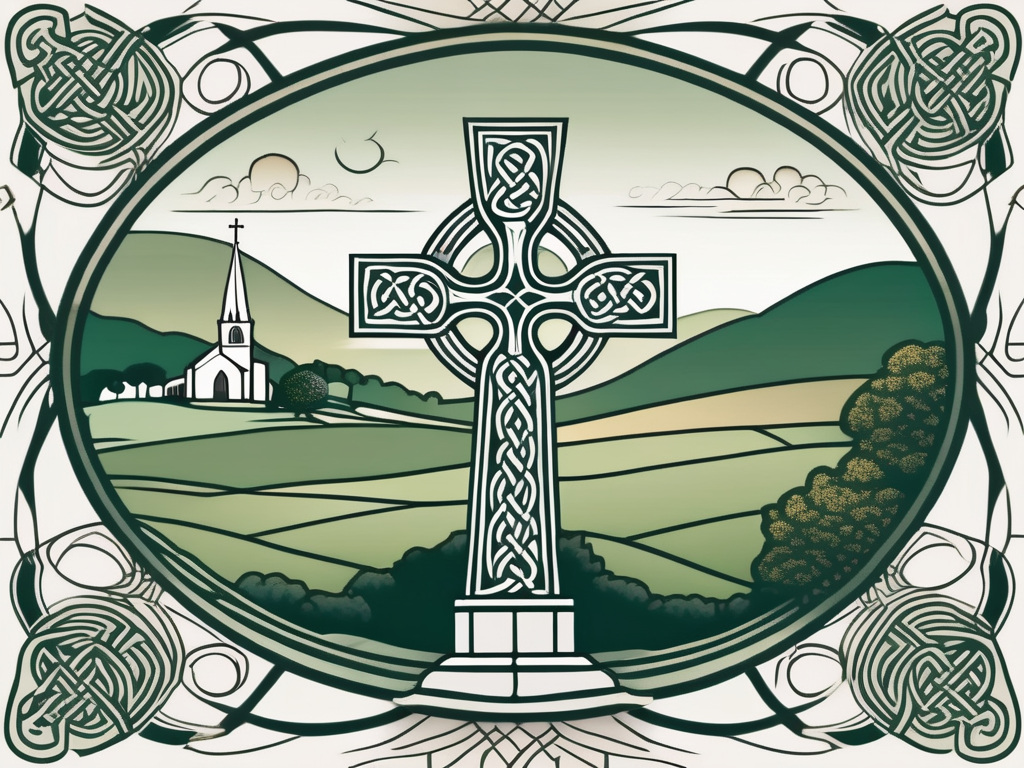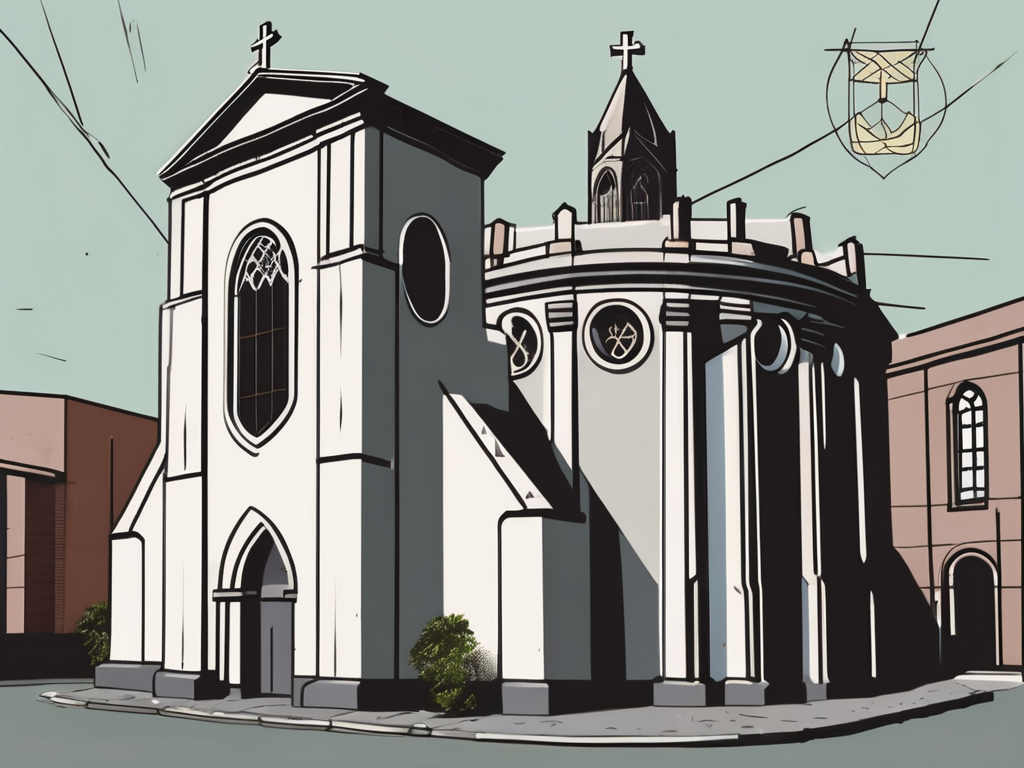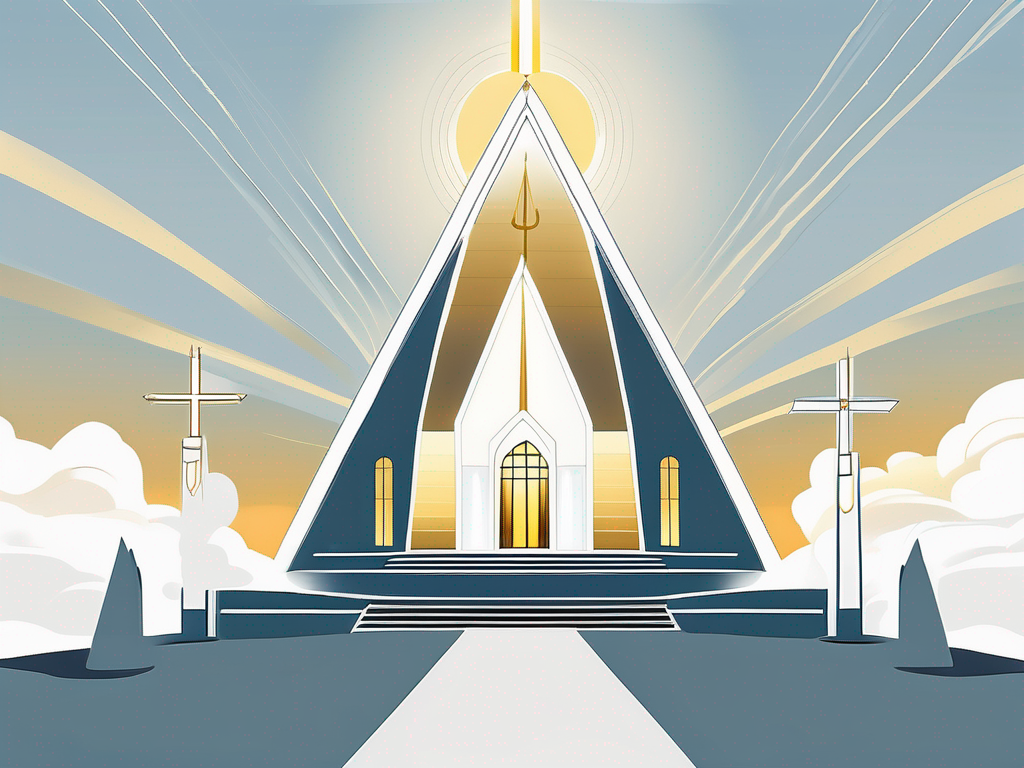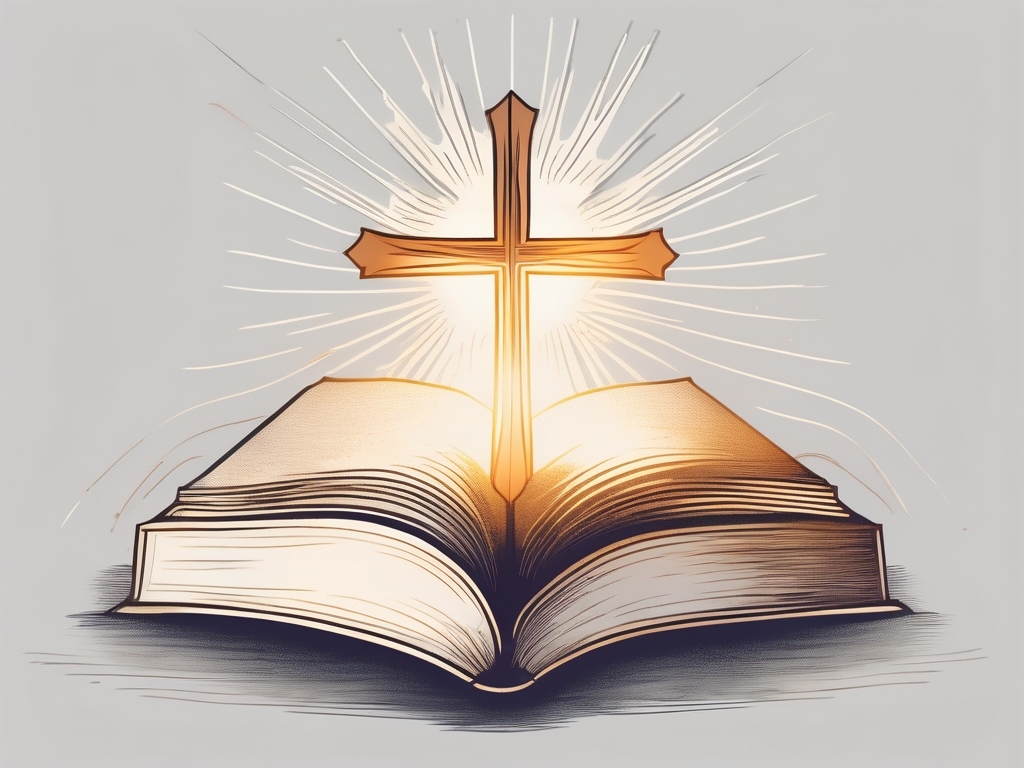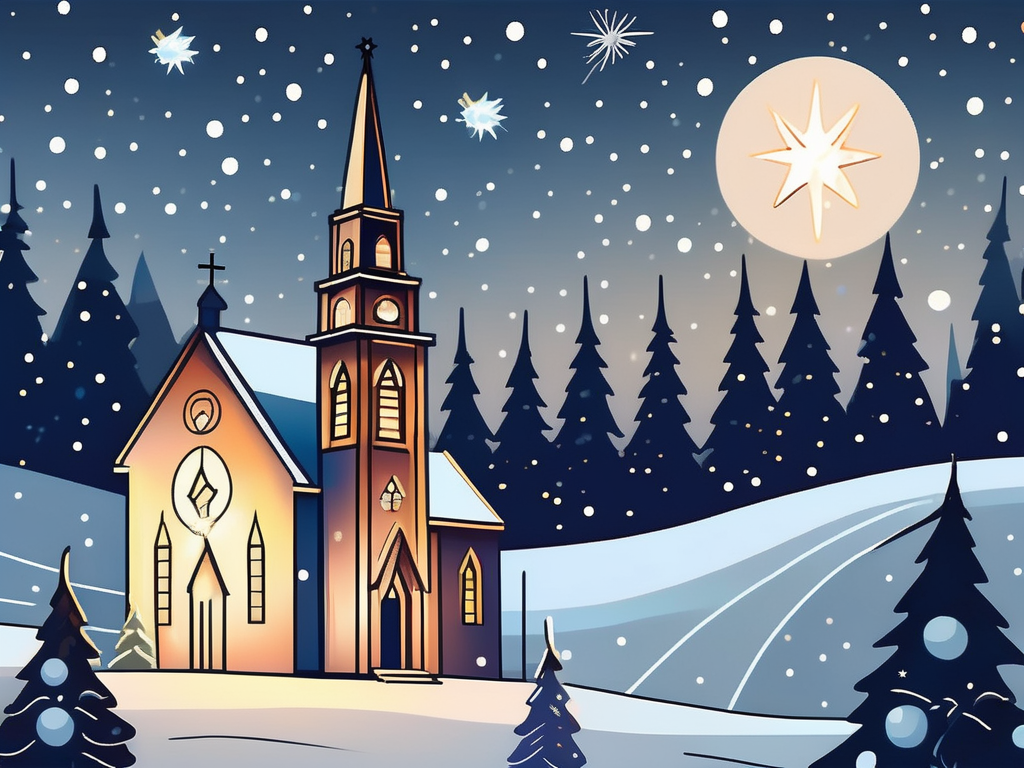Saint Patrick’s Day is a day of celebration and festivity observed on March 17th each year. It is a time to honor the patron saint of Ireland, Saint Patrick, and to embrace Irish culture and traditions. In this article, we will explore the fascinating history behind Saint Patrick and the evolution of the holiday that bears his name.
Understanding Saint Patrick: The Man Behind the Myth
Saint Patrick, also known as the Apostle of Ireland, is a figure surrounded by myth and legends. However, behind the folklore lies a remarkable man who shaped the religious landscape of Ireland.
But who was Saint Patrick really? Let’s delve deeper into his life and uncover the extraordinary journey that led him to become one of the most influential figures in Irish history.
Early Life and Enslavement
Saint Patrick was born in Britain in the late 4th century. His upbringing was relatively privileged, but his life took a dramatic turn when he was just 16 years old. Irish raiders captured Patrick and subjected him to a life of enslavement for six long years.
During his time as a slave, Patrick experienced unimaginable hardships. However, it was in the midst of this darkness that he found solace in his faith. Through prayer and a deep spiritual connection with God, Patrick discovered a source of strength that sustained him throughout his captivity.
Despite the physical and emotional toll of slavery, Patrick’s faith never wavered. In fact, it was during this period that he began to hear a calling from God, urging him to escape and return to his homeland.
Escape and Return to Ireland
With unwavering determination, Patrick managed to escape his captors and make his way back to Britain. However, his heart was still tied to the land that had once enslaved him. In a vivid dream, Patrick heard the voice of the Irish people calling out to him, begging him to return and bring Christianity to their shores.
This divine calling ignited a fire within Patrick’s soul. He knew that he had a mission to fulfill, a mission that would require him to return to Ireland, the very place where he had suffered so greatly.
Driven by his faith and the desire to spread the message of Christianity, Patrick embarked on a journey to Gaul. There, he received religious training and was ordained as a priest. Equipped with his newfound knowledge and an unwavering commitment to his faith, he set foot in Ireland once again.
Missionary Work and Legacy
Upon his return to Ireland, Saint Patrick dedicated his life to the conversion of the pagan Irish to Christianity. He traveled far and wide, preaching the gospel, baptizing converts, and establishing monasteries and churches.
Patrick’s mission was not without challenges. He faced resistance from those who clung to their pagan beliefs and traditions. However, his unwavering dedication and perseverance gradually began to bear fruit. People started to embrace Christianity, and the seeds of faith that Patrick had planted began to take root.
His influence was not limited to religious conversion alone. Saint Patrick’s efforts also had a profound impact on the cultural and social fabric of Ireland. The monasteries and churches he established became centers of learning, preserving and advancing knowledge in a time of great uncertainty.
After his death, Patrick’s legacy continued to grow. He became a revered figure, and his impact on Ireland was so significant that he was eventually canonized as the country’s patron saint. Today, Saint Patrick’s feast day, March 17th, is celebrated not only in Ireland but by people of Irish descent all around the world.
So, the next time you raise a glass in celebration of Saint Patrick’s Day, remember the man behind the myth. Remember the remarkable journey of a slave turned saint, whose unwavering faith and dedication forever changed the course of Irish history.
The Evolution of Saint Patrick’s Day
Over time, Saint Patrick’s Day evolved from a religious observance to a cultural celebration that transcends borders. Let us delve into the fascinating journey of this festive holiday.
Saint Patrick’s Day, also known as the Feast of Saint Patrick, is celebrated on the 17th of March each year. It commemorates the life and teachings of Saint Patrick, the patron saint of Ireland. What began as a religious feast day has transformed into a global celebration of Irish culture, heritage, and identity.
Origins of the Feast Day
The origins of Saint Patrick’s Day can be traced back to the early 17th century when the Catholic Church established it as a solemn religious feast. On this day, Irish Catholics would attend mass and engage in spiritual reflection.
Saint Patrick, the patron saint of Ireland, was a Christian missionary who is credited with bringing Christianity to the island. Legend has it that he used the three-leafed shamrock to explain the concept of the Holy Trinity to the pagan Irish, thus making the shamrock a symbol associated with him.
However, it wasn’t until the late 18th century that Saint Patrick’s Day began to transform into a more secular celebration, embracing Irish culture and national identity. Irish immigrants in the United States played a significant role in popularizing and expanding the holiday’s festivities.
Saint Patrick’s Day in Ireland
In Ireland, Saint Patrick’s Day has always held a special place in the hearts of the Irish people. It is a public holiday filled with parades, music, dancing, and a sense of national pride. The festivities highlight Ireland’s rich heritage, with traditional music, Gaelic sports, and Irish language events taking center stage.
The St. Patrick’s Festival, a multi-day celebration held in Dublin, is one of the largest and most vibrant events in Ireland. The festival features street performances, art exhibitions, fireworks, and a grand parade that winds its way through the city streets, attracting thousands of locals and tourists alike.
Green is the dominant color of the day, adorning everything from buildings to clothing. The iconic shamrock, a symbol attributed to Saint Patrick, is also prominently displayed, representing the Holy Trinity and luck. People wear green attire and accessories, and many even dye their hair or paint their faces green to fully immerse themselves in the festive spirit.
Global Spread and Recognition
Saint Patrick’s Day has transcended its Irish roots and become a global phenomenon. Irish communities across the world celebrate the occasion with great enthusiasm, keeping their heritage alive in foreign lands.
Cities such as New York, Chicago, and Sydney hold spectacular parades that attract participants and spectators from all walks of life. The New York City St. Patrick’s Day Parade, which dates back to 1762, is one of the oldest and largest parades in the world. It features marching bands, bagpipers, and various Irish cultural organizations, drawing millions of spectators each year.
Landmarks, like the Sydney Opera House and the Empire State Building, are illuminated in vibrant green, symbolizing solidarity and celebration. Irish pubs around the globe become lively hubs of music, dance, and merriment, where people gather to raise a glass and toast to the spirit of Saint Patrick’s Day.
As the world becomes more interconnected, Saint Patrick’s Day continues to grow in popularity, embracing people of all backgrounds and cultures. It serves as a reminder of the rich tapestry of Irish history and the enduring legacy of Saint Patrick, who brought faith and cultural traditions to the Emerald Isle.
Traditions and Symbols Associated with Saint Patrick’s Day
When it comes to Saint Patrick’s Day, there are several traditions and symbols that have become synonymous with the celebration. Let’s explore some of the most iconic ones.
The Significance of the Shamrock
The shamrock holds deep meaning in Irish culture and is closely associated with Saint Patrick. Legend has it that he used the three-leafed clover to explain the concept of the Holy Trinity – the Father, Son, and Holy Spirit – to the Irish people.
On Saint Patrick’s Day, it is customary to wear a shamrock as a symbol of Irish heritage and as a way to honor the patron saint.
The Legend of the Leprechaun
The mischievous leprechaun is a mythical creature steeped in Irish folklore. These tiny bearded men are said to be cobblers by trade and are known for their hidden pots of gold at the end of rainbows.
During Saint Patrick’s Day, the leprechaun has become an endearing symbol, often depicted as a cheerful character dressed in green, bringing joy and laughter to the celebrations.
Wearing of Green and Parades
Wearing green on Saint Patrick’s Day has become a time-honored tradition. It is believed that wearing this color makes you invisible to leprechauns and brings good luck.
Parades have also become a hallmark of Saint Patrick’s Day celebrations. These vibrant processions are filled with music, dance, and colorful floats, showcasing the diversity and vitality of Irish culture. They bring communities together and create a sense of shared heritage.
Modern Celebrations of Saint Patrick’s Day
Today, Saint Patrick’s Day is celebrated in various ways around the world, reflecting the cultural diversity and global appeal of Ireland. Let’s explore some of the contemporary festivities associated with this joyous occasion.
Saint Patrick’s Day in the United States
The United States boasts one of the largest Saint Patrick’s Day celebrations outside of Ireland. Major cities across the country hold grand parades, attracting millions of spectators.
Cities like Boston, Chicago, and New York dye their rivers and fountains green, creating a picturesque spectacle. It is also common to see iconic landmarks, like the White House and Niagara Falls, illuminated in green to honor the occasion.
Celebrations Around the World
Saint Patrick’s Day has truly become a global phenomenon. In countries as far-flung as Australia, Canada, Japan, and Argentina, people come together to celebrate Irish culture, often with their own unique twist.
The festivities range from traditional music and dance performances to Irish-themed festivals and Irish food and drink tastings. It is a day that promotes unity, friendship, and an appreciation for cultural diversity.
Commercialization and Criticism
As with any widely celebrated holiday, Saint Patrick’s Day has faced its fair share of commercialization and criticism. Some argue that the essence of the holiday gets lost amidst the sea of green merchandise and excessive partying.
However, it is important to remember that at its core, Saint Patrick’s Day is a celebration of Irish culture, heritage, and the profound impact of Saint Patrick’s teachings. By embracing the roots of the holiday and honoring its historical significance, we can ensure that its true spirit lives on.
So, whether you are of Irish descent or simply looking for an excuse to celebrate, Saint Patrick’s Day offers a vibrant and joyous occasion to come together, enjoy lively festivities, and appreciate the rich history and traditions that continue to captivate the world.
